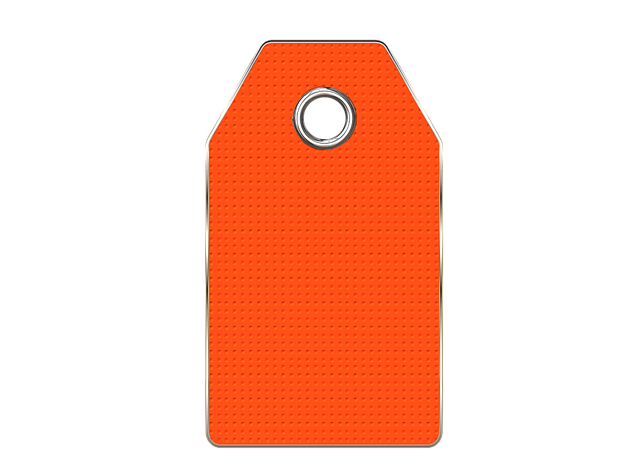The Bradford Tag Removal method is a non-surgical and less invasive way to eliminate skin tags, which are common benign growths found on the skin. Unlike traditional excision methods, this approach uses medical adhesive and cyanoacrylate glue to induce dehydration and natural shedding of the tag, minimizing bleeding and scarring. It's a safer alternative that provides effective management of skin tags with minimal downtime. The method is suitable for areas where skin tags often appear, such as underarms, neck, armpits, and groin. This treatment can be performed by healthcare professionals using techniques like cryotherapy, electrocautery, or sclerotherapy during an outpatient visit. For at-home treatments, Bradford Tag Removal Products offer a kit that includes solutions and tools for hassle-free removal. Post-removal care is crucial for a successful outcome; users should maintain cleanliness, monitor for signs of infection, and apply products like vitamin E or aloe vera to aid healing and reduce scarring. Following the provided instructions ensures a quick recovery and optimal results with the Bradford Tag Removal system.
Skin tags are common, benign skin growths that often appear as one ages. While generally harmless, their presence can affect self-esteem or become a point of irritation, particularly if they catch on clothing or jewellery. Traditional surgical removal is an option, yet it comes with its own set of risks and recovery considerations. Enter Bradford Tag Removal: a safe, non-surgical alternative that addresses the concerns of those looking to remove skin tags without the need for scalpels or anesthesia. This article delves into the nature of skin tags, explores the nuances of non-surgical removal methods, and provides guidance on post-removal care using Bradford Tag Removal products. Embrace a more confident and comfortable approach to managing skin tags.
- Understanding Skin Tags: What Are They and When Should You Consider Removal?
- Non-Surgical Methods for Skin Tag Removal: A Guide to Bradford Tag Removal Techniques
- Post-Removal Care: Ensuring a Safe and Healing Recovery After Non-Surgical Skin Tag Removal with Bradford Tag Removal Products
Understanding Skin Tags: What Are They and When Should You Consider Removal?

Skin tags, also known as acrochordons, are benign skin growths that typically present as soft, hanging pieces of skin attached to a stalk. They can vary in size from tiny growths to larger ones and are commonly found on areas of the body with folds or creases such as the underarms, neck, armpits, and groin. While they are generally harmless and pose no medical risks, some individuals may seek their removal for cosmetic reasons, comfort, or due to concerns about potential complications like bleeding or infection if the tag becomes irritated or injured.
When considering removal, it’s important to consult with a healthcare professional to assess the skin tag’s size, location, and whether it exhibits any signs of atypia that might warrant a biopsy for pathological examination. In cases where removal is deemed appropriate, the Bradford Tag Removal method offers a non-surgical alternative to traditional excision. This innovative approach uses a precise blend of medical adhesive and cyanoacrylate glue which, when applied under sterile conditions, causes the skin tag to dehydrate and fall off over time without the need for scalpels or sutures. This method is not only less invasive but also minimizes bleeding and the risk of scarring, making it an attractive option for those seeking a more convenient and discreet removal process. With the Bradford Tag Removal technique, individuals can address their skin concerns with confidence and efficiency, ensuring a safer and more comfortable experience.
Non-Surgical Methods for Skin Tag Removal: A Guide to Bradford Tag Removal Techniques

Skin tags are common, benign skin growths that often occur on areas where the skin folds or rubs against itself. While they are generally harmless and painless, many individuals opt to remove them for cosmetic reasons or due to irritation caused by clothing or jewelry. Traditional surgical methods have long been the standard for removal, but recent advancements have introduced non-surgical alternatives, among which Bradford tag removal techniques stand out. These methods offer a less invasive approach to addressing skin tags, providing a safe and effective solution without the recovery time and risks associated with surgery.
Bradford tag removal involves the use of precise medical-grade equipment designed to target and remove the base of the skin tag with minimal discomfort. One such technique is cryotherapy, which freezes the skin tag, causing it to fall off on its own over a few days. Another method is electrocautery, where a cautery device seals blood vessels and removes the tag with an electrical current. Both techniques are performed by a healthcare professional and can be completed during an office visit. Additionally, sclerotherapy, which involves injecting a solution into the skin tag to cause it to shrink and fall off, is another non-surgical option. These methods, particularly those associated with the term ‘Bradford tag removal,’ are gaining popularity for their efficacy in treating various types of skin tags, ensuring patients can maintain clear, smooth skin without undergoing traditional surgery.
Post-Removal Care: Ensuring a Safe and Healing Recovery After Non-Surgical Skin Tag Removal with Bradford Tag Removal Products

When removing skin tags through non-surgical means, post-removal care is paramount to ensure a safe and effective healing process. Utilizing Bradford Tag Removal Products offers a gentle yet effective solution for those looking to remove skin tags at home. The kit includes carefully formulated solutions and tools designed to target and address the skin tag while minimizing discomfort. Post-removal, the area should be kept clean to prevent infection. Gently washing the affected area with warm water and a mild soap is recommended to maintain cleanliness without irritating the newly removed skin tag.
During the healing process, it’s crucial to monitor the site for any signs of infection, such as increased redness, swelling, or pus, and to address these issues promptly. Bradford Tag Removal Products provide comprehensive instructions to guide users through each step of the removal and aftercare process. Adhering to these guidelines will aid in the swift closure of the skin tag’s base, reducing the risk of scarring and promoting a quick return to normal skin appearance. Regularly applying the vitamin E or aloe vera moisturizers included in the Bradford kit can also facilitate healing by keeping the area well-moisturized and supporting the regeneration of healthy skin cells. With diligent post-removal care, users can enjoy the benefits of non-surgical skin tag removal with minimal recovery time and optimal results.
In conclusion, skin tags are common benign growths that can be addressed through various methods. For those seeking a non-surgical solution, Bradford Tag Removal stands out as a safe and effective option for removal. By understanding the nature of skin tags and recognizing when it’s appropriate to consider their removal, individuals can make informed decisions about their health and appearance. The guided approach to non-surgical methods, particularly those involving Bradford Tag Removal techniques, combined with proper post-removal care, ensures a healing recovery without the need for traditional surgery. This article has outlined the key aspects of managing skin tags non-invasively, providing readers with valuable insights into maintaining clear, healthy skin safely and effectively.
